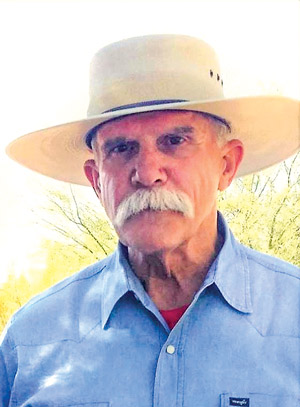Horsemanship is a difficult subject to tackle in magazine articles or conference presentations. I feel like it is impossible to explain to the uninitiated what horsemanship is in a 30-minute presentation. It would only serve to confuse.
I am disappointed in what appears to be a forgotten fact — as professional farriers, we are HORSEshoers, not HOOFshoers. It is this erroneous focus that gets so many young people started off incorrectly and serves to virtually guarantee their sooner-than-later failure. I’ve witnessed a precipitous drop in even the most basic levels of horsemanship skills among young farriers today, while — not surprisingly — witnessing what appears to be an exponential rise in serious, career-ending injuries to some of these same young people.
I believe the rush into what seems to be “quick money” among farrier students is the same attitude that gets so many of my horse clients in trouble. These clients are so eager to “get in the saddle” that they short-cut proper foundational preparation in the young horse. Many novice farriers won’t take the time to build horsemanship skills, but they may be forced to take the time to recover from broken legs, hands, backs and fractured skulls. Some are never able to recover because they are paralyzed or killed from a kick to the head or crushed under the weight of an unruly horse. Here’s the catch — the horse telegraphed all the way from Hong Kong what it was going to do, but the inexperienced owner or “farrier” didn’t have the horsemanship skills to read the incoming message.
What Is Horse Training?
Many young people are looking for “trainer tricks” — a short-cut — a “quick and easy way.” One of the tenets that I use for teaching horsemanship is that if I explain a technique, the student knows a single technique. But if I teach a concept, the student then knows 1,000 techniques.
I have had to handle some very rank horses in my career. I still do. By choice. These horses behave exactly how the human has trained them to — training the horse to bite, rear, strike and display other behaviors. When I see this behavior, I tell the owner, “Congratulations, you are a horse trainer.” Everything you do around a horse is training it for the good, or the bad and ugly.
Legendary horseman and teacher Tom Dorrance and others have said, “A horse can behave in one of two ways: it will do exactly what it thinks you want it to do, or it will do anything and everything it can to save its life.” As such, if you have allowed a horse to have no respect for your space, to bite at you, strike, kick, to not feel safe being handled anywhere on its body and become defensive, that horse has learned that it can — and will — do anything it feels necessary to preserve its life. The human gets injured and blames the horse. The horse is always right in its actions.
 If I have done any good thing in my life, I’ve been pretty successful in teaching people how to communicate with horses in a manner that is both meaningful and beneficial to both the human and the horse.
If I have done any good thing in my life, I’ve been pretty successful in teaching people how to communicate with horses in a manner that is both meaningful and beneficial to both the human and the horse.
My life with horses began as a foster child, who ran away from a foster home and hid out in the Carters’ horse barn for 4 days before I was “discovered.” I remember the “pants down” spanking I got when I arrived back at the foster home. They couldn’t figure why I continued to run away! (Think about the strong correlation with horses — and how many people react to them here.) As a foster child, there can be a loneliness, and lonely children gravitate toward animals. For me, it was horses. I found peace and solace in horses. I started standing by the fence and watching them. When I take on an apprentice, train young people or work with clients who want to learn how to better communicate with their horses, I will take them to a breeding farm every day for a week. Each day — all day — they will sit and watch and study how mares and foals interact. I require a daily report of what they observed. Disciplined, open-minded observation of how horses communicate with each other is by far the best lesson-plan any student of horsemanship can follow. The late Tom Dorrance said it best, “Observe … remember … compare.”
I’m here for the good of the horse. To quote Dorrance and the late Ray Hunt, “If you hurry a horse, you only get to the wrong place quicker.” That same principle applies to young farriers.







